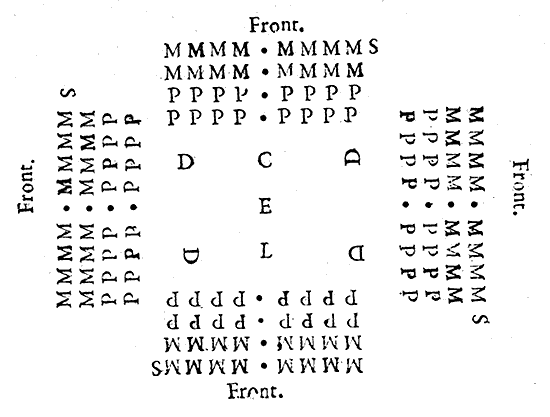![]()
The Hollow Square
|
| Commands: "Form a Hollow Square!" followed immediately by "Charge for Horse!!!" plus other commands and expletives In a tone rather subdued for the topic, Colonel Barriffe recommends this defensive formation "...be used in times of necessity..." A situation demanding the hollow square does not allow a leisurely consideration of options and advisement from committees. Especially when charging cavalry bears down on the soldiers, there is VERY little time to assume the hollow square; from 50 meters a horse at a gallop can close the gap faster than a frightened soldier can wet his breeches. Every soldier must scramble as fast as possible to get into place. And the order may be given at any time with any arrangement of troops, from the march to a wheel to musketeers skirmishing. Therefore, no animation can serve as an example of every instance. An illustration of the final configuration from Colonel Barriffe's work is presented instead.* Soldiers on each side of the square face out. All assume
battle postures, with the front ranks of pike at Charge for Horse.
Colonel Barriffe has the musketeers position themselves before the pike,
but can be behind if the commander so chooses:
"...the Musquettiers may more commodiously fight before their Pikes,
and with lesse danger to their own body: therefore I conceive it
fittest at first to place them in front of their Pikes. And if
the enemy shall too hotly press them with his Horse, then at the
discretion of the Commander, they may safely retire behind their
Pikes..."
|
||||